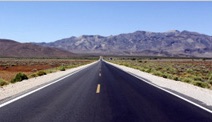The Takeaway
- Sleepiness can impair driving in many people with narcolepsy.
- People with narcolepsy must determine when they are safe to drive or whether to drive at all.
People with narcolepsy need to consider how they will manage day-to-day activities that are potentially hazardous, such as driving, operating heavy machinery, or even cooking.
Driving
Staying alert while driving can be a challenge for people with narcolepsy: they can doze off at a stoplight, while stuck in traffic, or when driving on the highway. Nodding off, even for a moment, is dangerous, as it takes only a few seconds for a car to drift off the road or hit an obstacle. Though uncommon, cataplexy while driving can cause a person to lose control of the automobile. Therefore, individuals with narcolepsy must determine when it is safe to drive, if at all.

Research on driving with narcolepsy is limited, but what is known highlights the problem. Several studies of people with narcolepsy have found that more than half have fallen asleep while driving, and over one-third have had an accident due to sleepiness.1, 2, 3 Highway driving can be especially difficult, as many people with narcolepsy find it difficult to sustain vigilance on long drives.4 Overall, it appears that people with narcolepsy have a roughly three- to four-fold increased risk of having a car accident.1, 3
Determining whether to drive
Deciding whether to drive, and what precautions to take if you do drive, is particularly important. Before deciding to drive:
- Do a self-assessment. Ask yourself whether you can maintain the alertness needed to drive safely. If so, for how long can alertness be maintained?
- Consult with family and friends. Ask family and friends for honest feedback. They may recognize signs of sleepiness that you are not fully aware of.
- Discuss driving with your doctor. Your doctor needs to consider your safety, the safety of your passengers, and the welfare of others on the road. Getting a driver’s license may require a letter or form from a doctor stating that the individual’s narcolepsy is well controlled and that they are unlikely to doze off when driving. In some cases, the doctor may choose to do a Maintenance of Wakefulness Test (MWT) to determine whether an individual can stay awake even under boring circumstances.5 This test cannot guarantee that an individual will remain alert when driving, but the results can still be helpful for optimizing medications. This test is especially important if a person with narcolepsy has previously fallen asleep while driving.

When sleepiness is under good control, many people with narcolepsy are safe to drive. However, they must know their limits. Some individuals may be safe driving around town for 30 minutes but not on a four-hour, boring highway drive. Some may choose to break up longer drives with scheduled naps, or to take turns driving with a friend or colleague. Others may choose not to drive after a meal or after 7 p.m. Making these adjustments is a smart and strategic way to work with your narcolepsy.
Dr. Kirsch discusses whether cataplexy is a safety risk
The issues around driving and narcolepsy are similar to those around driving and epilepsy. More information on driving laws in specific states can be found at the Epilepsy Foundation’s "Driving Laws by State" web page.
Occupational and household hazards
Sleepiness and cataplexy can lead to accidents at home or at work. About 30–50% of people with narcolepsy have had accidents or near accidents that involved falling asleep while cooking, smoking, running dangerous machinery, or crossing the street.2, 3, 6 The best insurance against having an accident is to understand the conditions under which you are likely to become inattentive or fall asleep. Along these lines, it may be wise to avoid jobs that require sustained vigilance under boring conditions.

Self-awareness is key. For example, the more aware you are of what triggers your cataplexy, the better able you will be to anticipate and manage it. Cataplexy seldom occurs at critical times, when it would be truly dangerous. Rarely, however, cataplexy is both frequent and severe, with incapacitating paralysis. Such an episode while, say, driving, holding a baby, or swimming could have serious consequences. During such activities, avoid anything that might trigger an episode, and take precautions if weakness begins. Self-awareness enables you to work with your narcolepsy, set priorities, and make adjustments to live successfully with your disorder.
References
- Aldrich MS. Automobile accidents in patients with sleep disorders. Sleep 1989; 12:487–94.
- Watson NF, Ton TG, Koepsell TD, Gersuk VH, Longstreth WT Jr. Does narcolepsy symptom severity vary according to HLA-DQB1*0602 allele status? Sleep 2010; 33:29–35.
- Broughton R, Ghanem Q, Hishikawa Y, Sugita Y, Nevsimalova S, Roth B. Life effects of narcolepsy in 180 patients from North America, Asia and Europe compared to matched controls. Can J Neurol Sci 1981; 8:299–304.
- Findley LJ, Suratt PM, Dinges DF. Time-on-task decrements in "steer clear" performance of patients with sleep apnea and narcolepsy. Sleep 1999; 22:804–9.
- Littner MR, Kushida C, Wise M, Davila DG, Morgenthaler T, Lee-Chiong T, Hirshkowitz M, Daniel LL, Bailey D, Berry RB, Kapen S, Kramer M. Practice parameters for clinical use of the multiple sleep latency test and the maintenance of wakefulness test. Sleep 2005; 28:113–21.
- Broughton RJ, Guberman A, Roberts J. Comparison of the psychosocial effects of epilepsy and narcolepsy/cataplexy: a controlled study. Epilepsia 1984; 25:423–33.